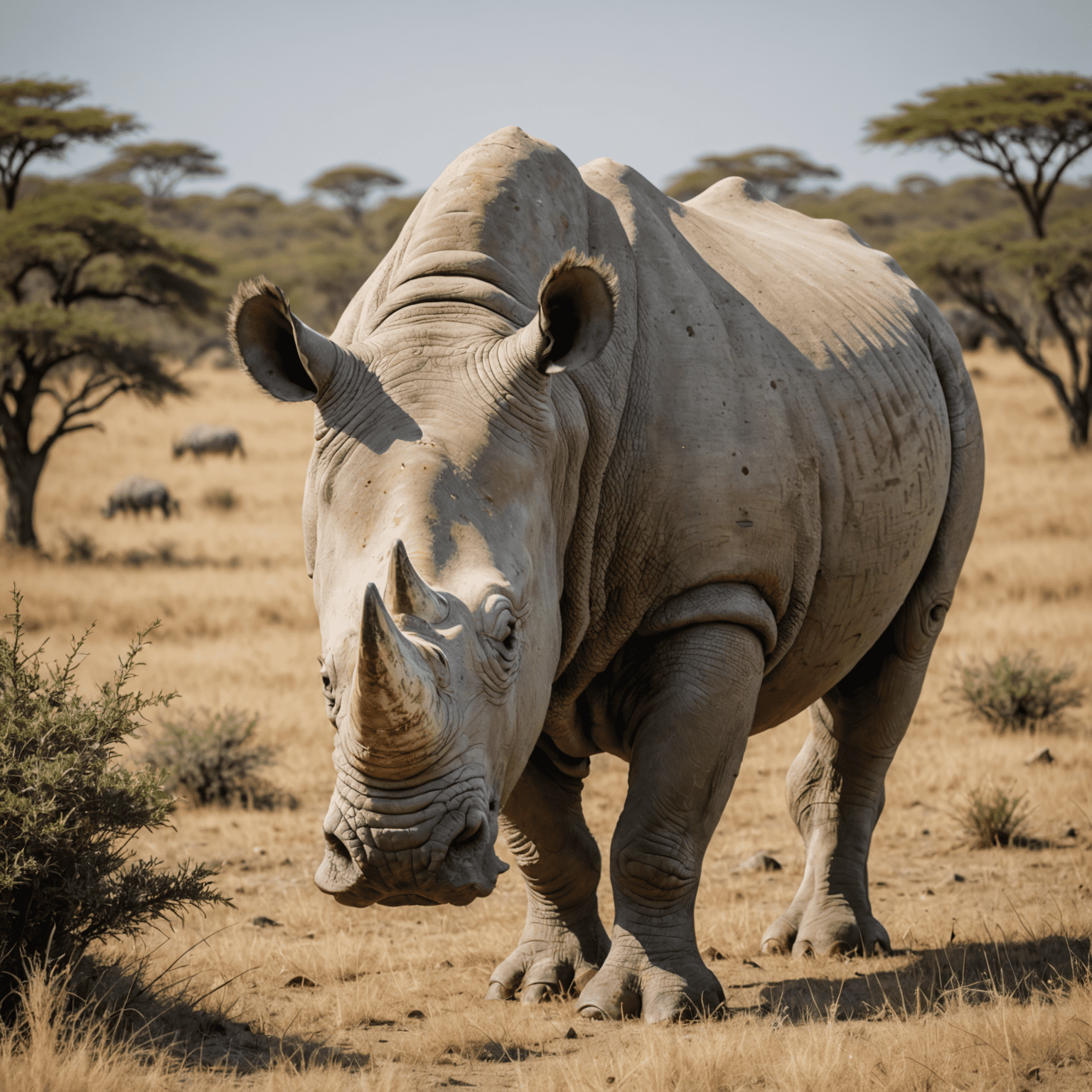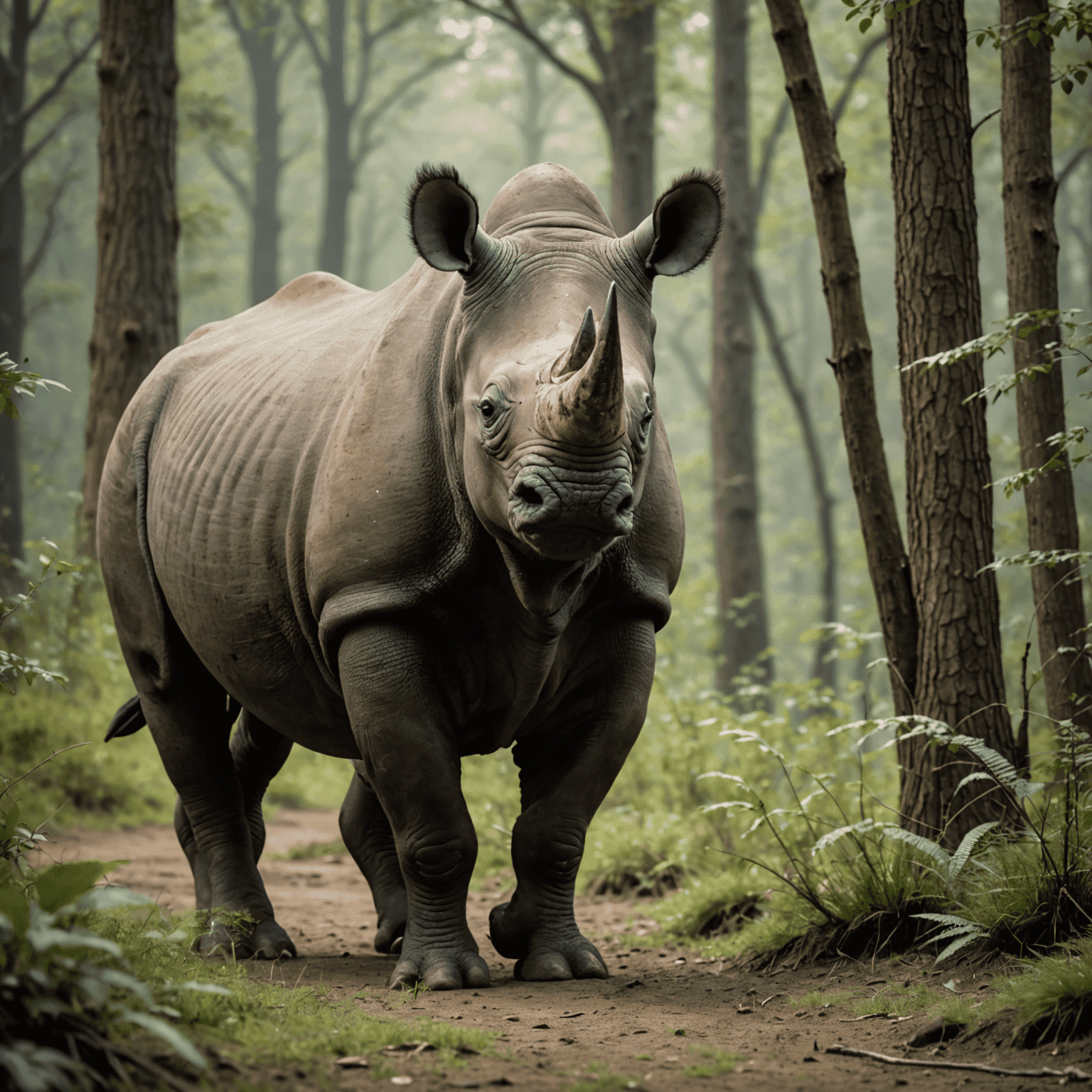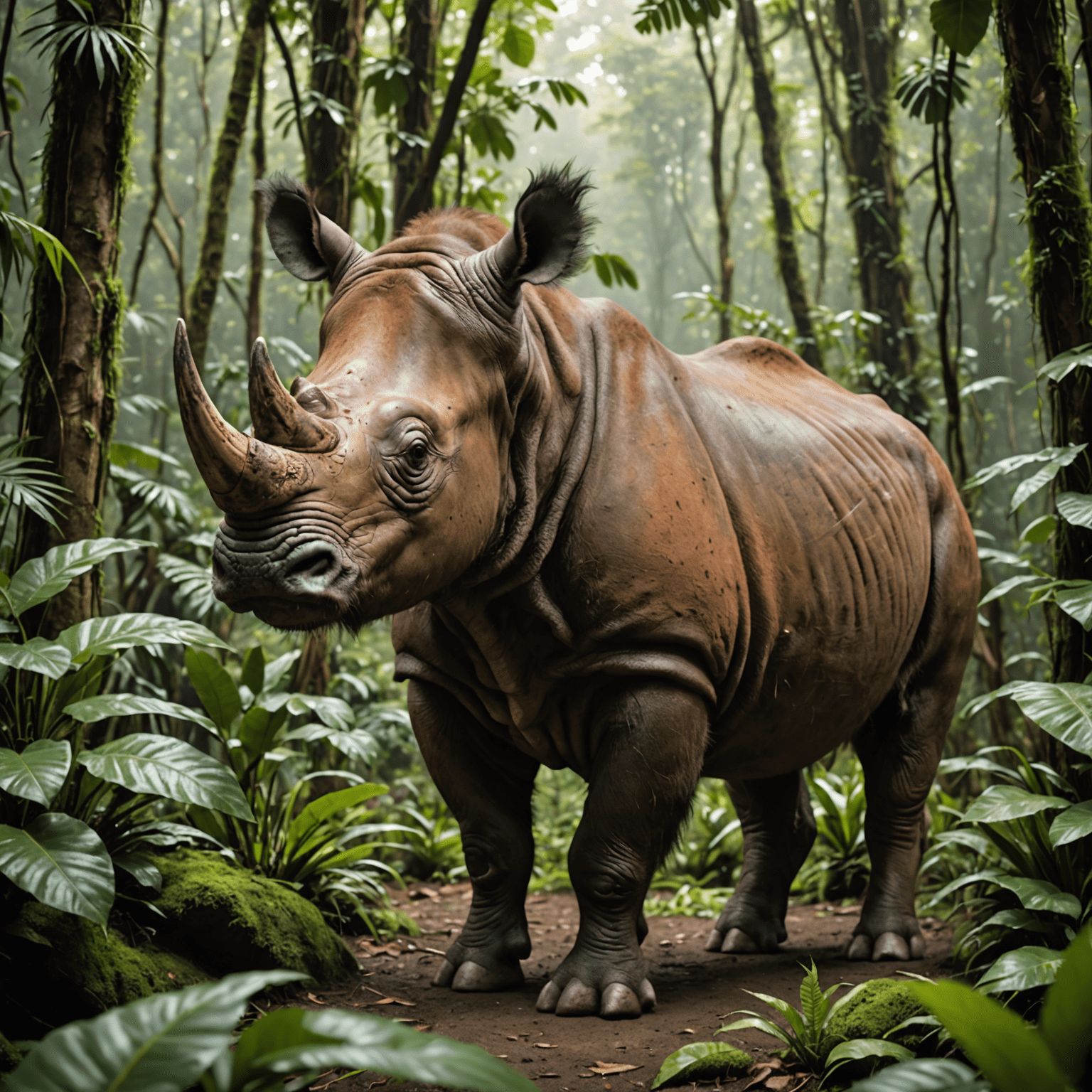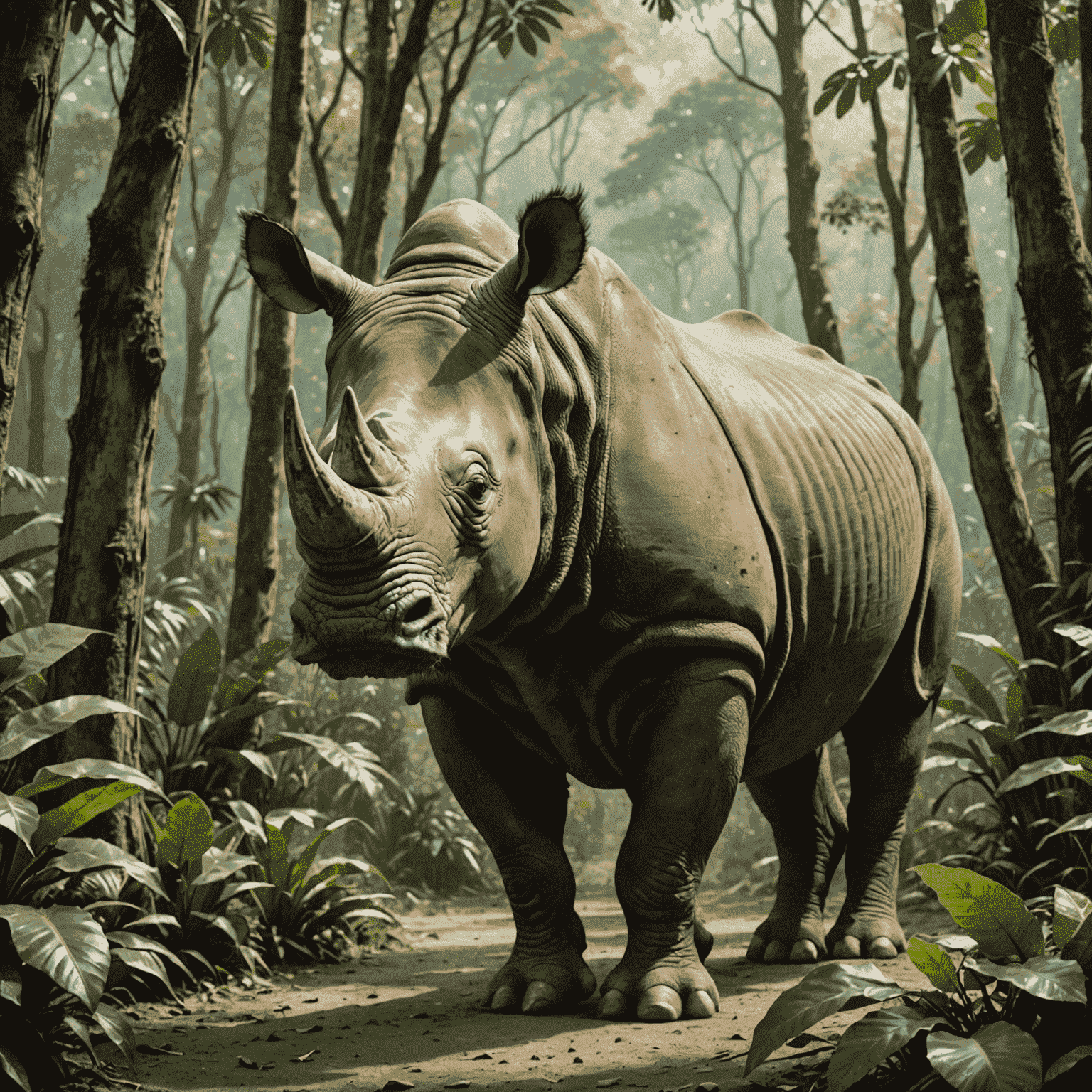Rhino Species Spotlight
Explore the fascinating world of rhinos as we delve into the unique characteristics and habitats of different species.
White Rhino

The white rhino, despite its name, is actually gray in color. It's the largest of all rhino species, characterized by its wide, square lip adapted for grazing. Found primarily in southern Africa, these gentle giants play a crucial role in maintaining grassland ecosystems.
- Habitat: Grasslands and savannas
- Diet: Primarily grass
- Weight: Up to 2,300 kg (5,100 lbs)
Black Rhino

The black rhino, ironically also gray, is distinguished by its hooked lip, perfect for browsing on leaves and twigs. These solitary animals are known for their aggressive temperament and are critically endangered due to poaching.
- Habitat: Forests and shrublands
- Diet: Leaves, branches, and fruit
- Weight: Up to 1,400 kg (3,100 lbs)
Indian Rhino

The Indian rhino, also known as the greater one-horned rhino, is easily recognizable by its armor-like skin folds. These impressive creatures are excellent swimmers and have made a remarkable recovery from near-extinction.
- Habitat: Grasslands and swamps
- Diet: Grass, fruit, and aquatic plants
- Weight: Up to 2,200 kg (4,850 lbs)
Sumatran Rhino

The Sumatran rhino is the smallest and hairiest of all rhino species. Critically endangered, these ancient-looking creatures are known for their reddish-brown fur and two horns. They play a vital role in seed dispersal in their rainforest habitat.
- Habitat: Tropical rainforests
- Diet: Leaves, twigs, and fruit
- Weight: Up to 950 kg (2,090 lbs)
Javan Rhino

The Javan rhino is the rarest of all rhino species, with only about 60 individuals left in the wild. These elusive creatures have a single horn and skin that falls in loose folds, giving them an armor-plated appearance.
- Habitat: Tropical forests and wetlands
- Diet: Leaves, twigs, and fallen fruit
- Weight: Up to 2,300 kg (5,100 lbs)
Conservation Status
All five rhino species are threatened by habitat loss and poaching. Conservation efforts are crucial for their survival. Learn more about how you can contribute to rhino conservation and help protect these magnificent creatures for future generations.